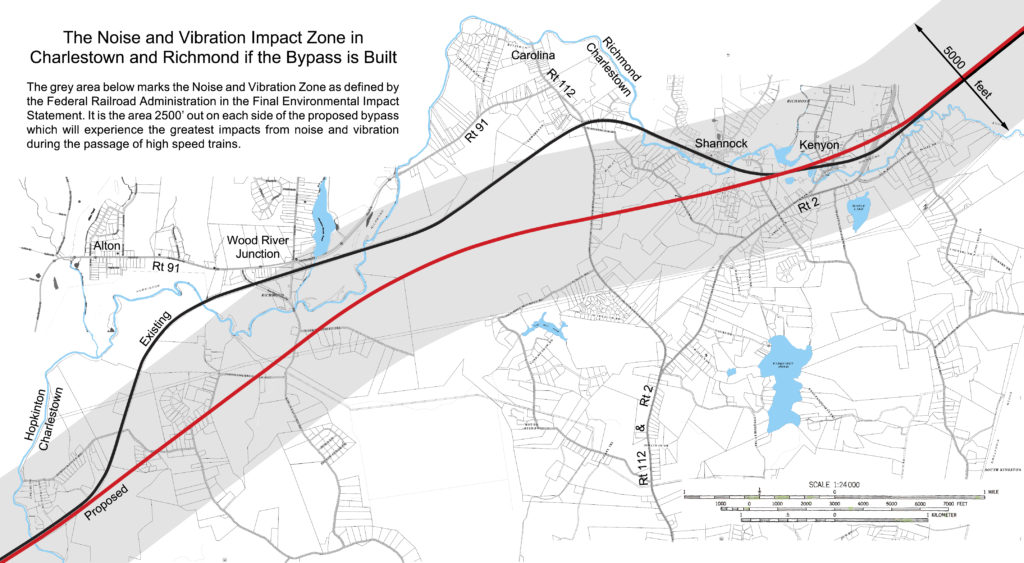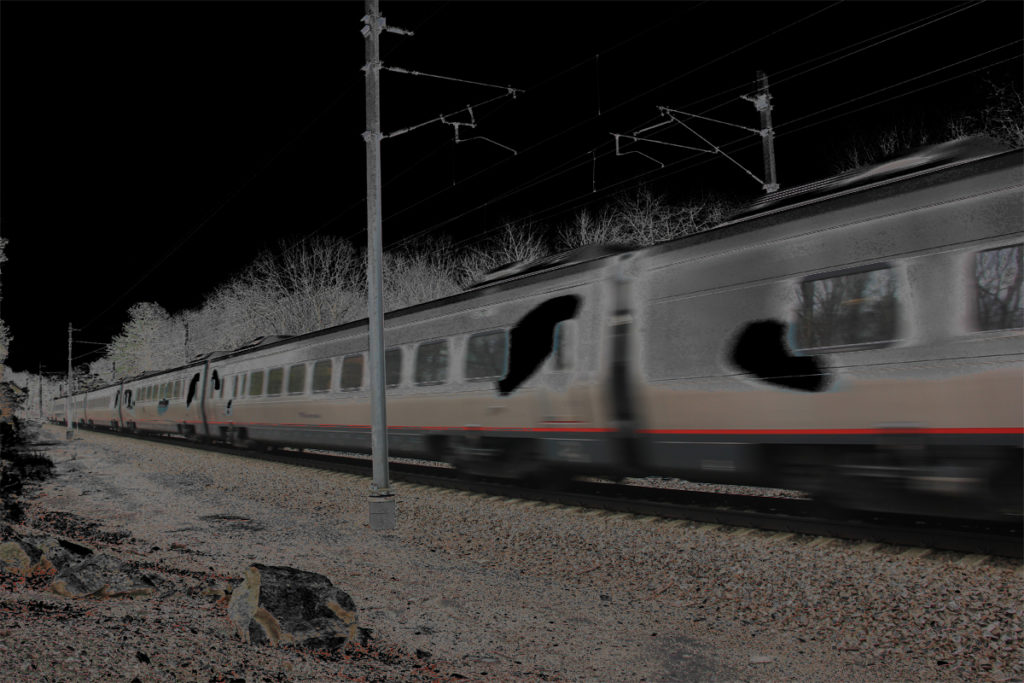Noise and Vibration Impact Zone in Charlestown and Richmond
Maps, photos, and descriptive text by Cliff Vanover. Information in this post from NEC Future Tier 1 Final EIS – Chapter 7.12 Noise and Vibration.

The Federal Railroad Administration (FRA) has estimated the noise and vibration impacts in South County if the bypass were constructed. They’ve established a zone of 5000 feet centered on the bypass. In other words, if you live within 2500 feet of the proposed bypass, you will experience noise and vibrations from the passage of high speed trains. This is how they define noise and vibration in the Final Environmental Impact Statement (Section 7.12.1 Introduction):
Noise – typically defined as unwanted or undesirable sound – is generated by railway-related sources such as vehicle engines, wheel-rail interaction, and audible warning devices, including train horns, which may cause annoyance at nearby sensitive receptors. In the case of high-speed rail, aerodynamic noise can be generated when train speeds start to exceed 160 miles per hour (mph).
Vibration – defined as oscillatory motion – is generated by wheel-rail interaction from railway operations. Such vibration is transmitted through the track structure into the ground and may be perceptible and disturb people or sensitive activities in nearby buildings.
They estimate that in Washington County, approximately 1460 people will experience “Severe” noise impacts and 3370 will experience “Moderate” noise impacts (Table 7.16-6). They do not break the numbers down by town, nor is the methodology used to determine these numbers given.
Note that in the map above, the Carter Preserve is entirely within the noise impact zone, further diminishing its habitat value for ground nesting birds and other wildlife.

January 29, 2017 @ 10:06 am
I remember when the ties on the RxR line through both Carolina and Shannock and beyond were upgraded to concrete in the ’70’s. The trains made quite a racket going by then being diesel only. If I recall correctly, whoever was in charge of construction on that line then sent prisoners out to do the dirty work. We used to see them down there and they would ask us to buy stuff they wanted. We didn’t know they were prisoners back then, and didn’t buy anything for them anyhow. This being another reason not to embark on a big rail project through here. You never know who your kids will be exposed to.
January 24, 2017 @ 9:01 pm
Hello, I have lived in my Charlestown home for ten years now, 420 Old Mill Rd. The Peleg Tucker House, built in 1845, My wife and I bought this House, which was in need of some TLC. Let me say that we payed way to much for it, but the location was so hard to say no to. We have worked tirelessly to capture her glory, and keep the history alive. Recently we have purchased the property across the street on Saw Mill Pond that was part of the original track of land, preserving her stature. We, as many other neighbors do, live here for what we don’t have,,, as opposed to what we do have,,, or what we don’t want or need. ” WE DO NOT NEED A HIGH SPEED TRAIN” Leave our Environment, and our Homes , ,,, Alone!